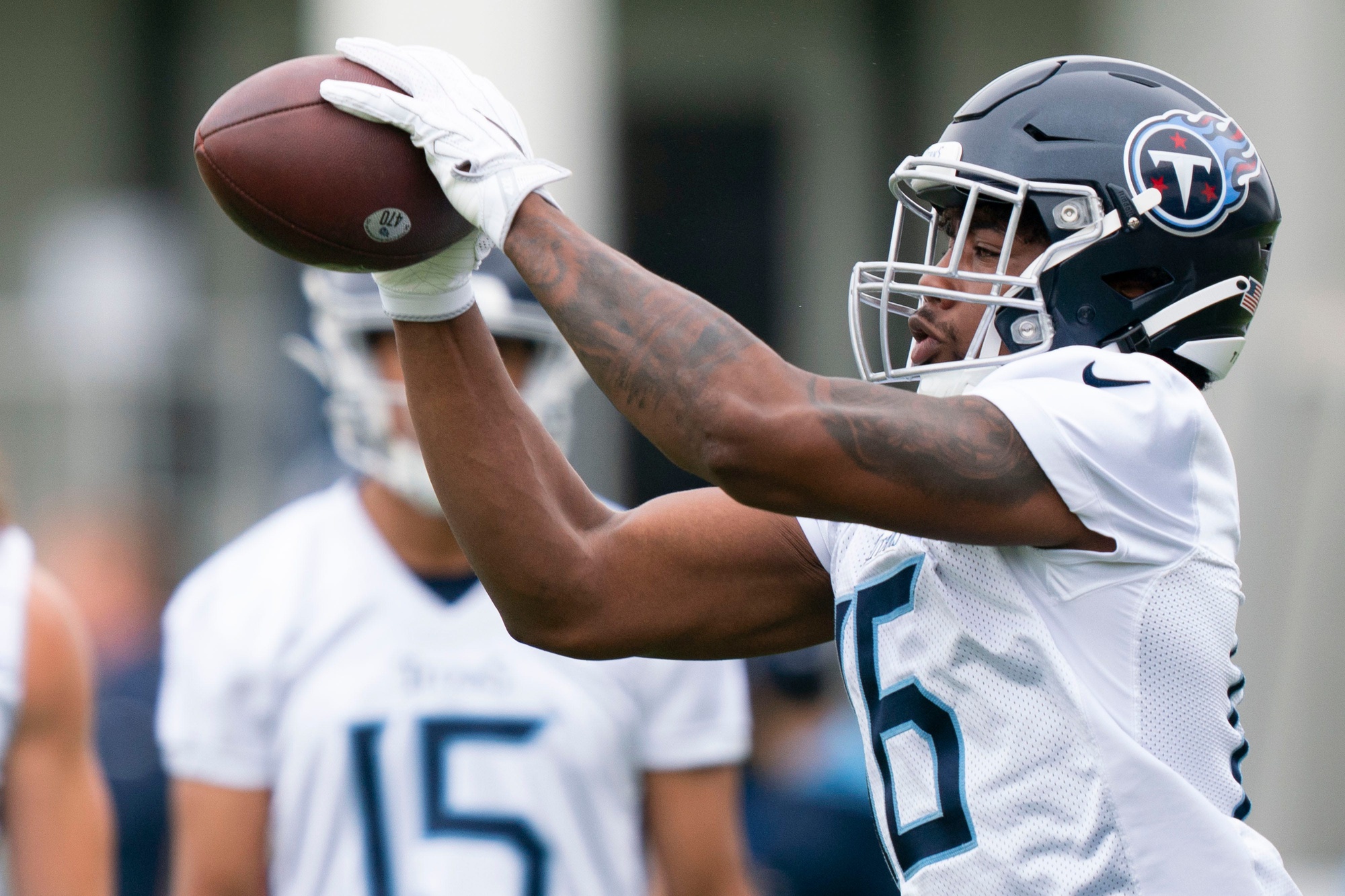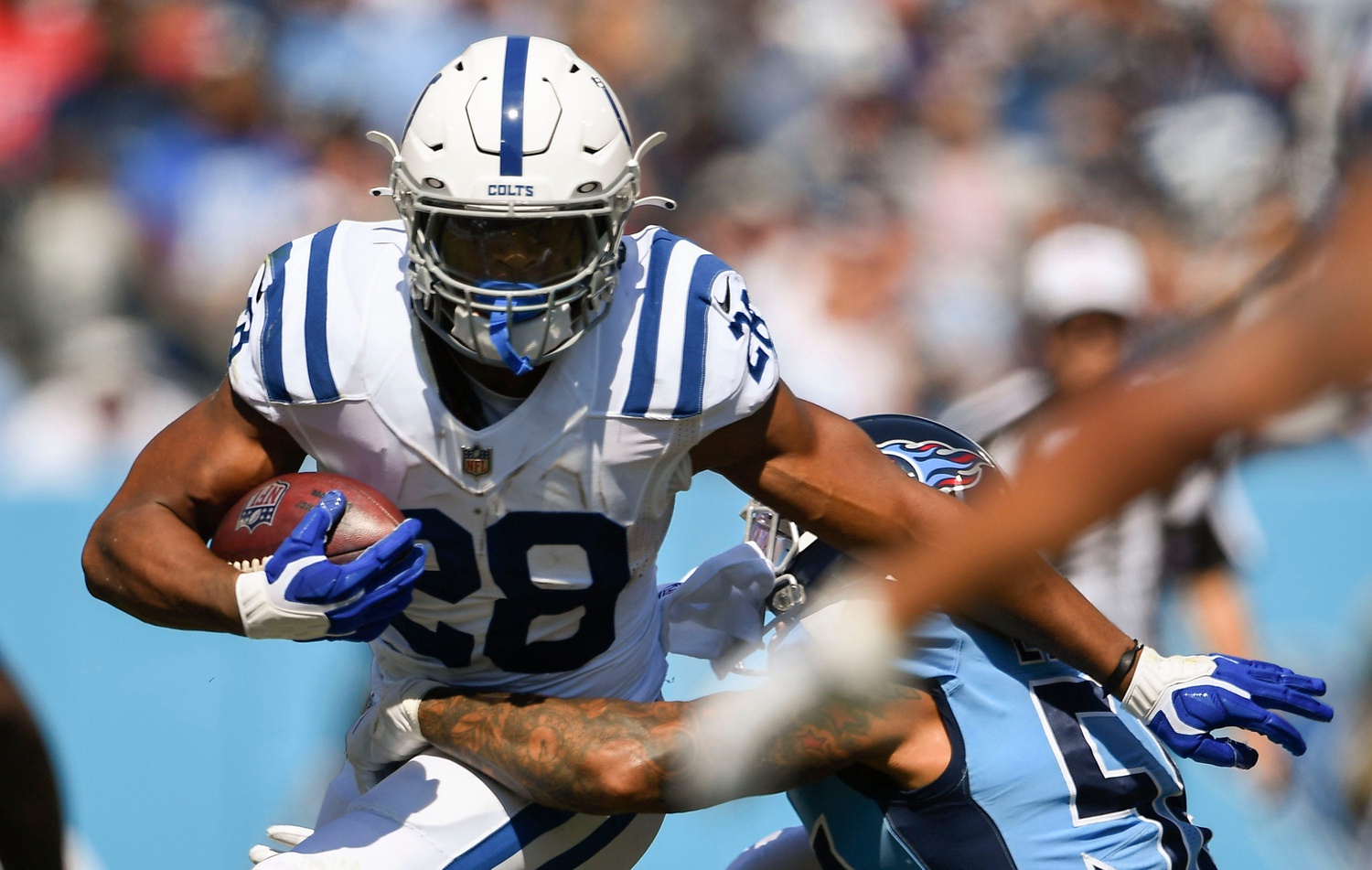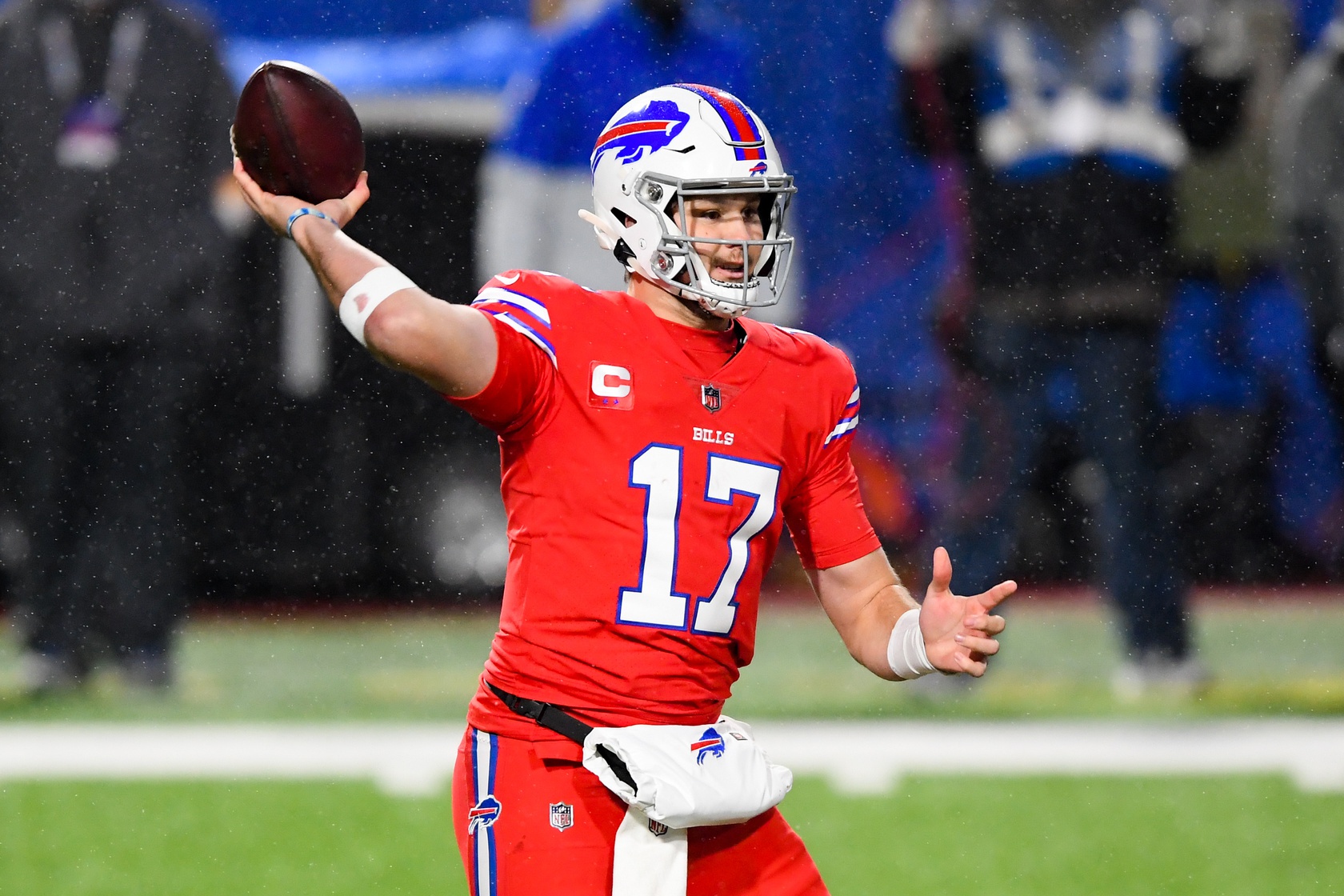There was a slew of intriguing wide receivers taken in the 2022 NFL Draft and if you play fantasy football, that should be music to your ears. Six wideouts were taken in the first round alone, but today we’ll focus on just two of them: Falcons wide receiver Drake London and Titans wide receiver Treylon Burks.
Atlanta made London the first wide receiver taken with pick No. 8, and Tennessee selected Burks at No. 18 with the pick they received from the A.J. Brown trade. London and Burks have typically been the two highest-ranked rookie receivers in fantasy — and for good reason. But who should you draft first? To determine this, we’ll dive into four defining factors before delivering a final verdict:
- New offenses
- Potential opportunities in their offenses
- Ceilings
- Floors
The key to figuring out which player to draft lies in possibility and outside of naivety. In simpler terms, we can’t assume we know how each player will perform. The goal of this piece is to look at previous trends and data and to project a range of potential outcomes for each player. I’m not predicting which player will have a better season. Instead, we’re determining which player has a better chance of reaching a higher ceiling and avoiding a lower floor.
That starts by assessing London and Burks’ current value. To do this, let’s look at their ADPs (Average Draft Position). I used FantasyPros’ consensus ADP tool, which combines a player’s ADP from multiple sites, and Underdog Fantasy’s ADP, which reflects more current trends and the players’ best ball values.
Drake London ADP
FantasyPros: WR40
Underdog Fantasy: WR33
Treylon Burks ADP
FantasyPros: WR35
Underdog Fantasy: WR35
Offensive System
London: The Falcons don’t exactly have a pass-happy offense. Despite passing at the eighth-highest rate in football last season, it’s safe to assume Head Coach Arthur Smith will choose to run the ball more. After all, he did it well enough with running back Derrick Henry in Tennessee. Atlanta doesn’t have a Derrick Henry but they replaced Matt Ryan with Marcus Mariota, who isn’t a vertical quarterback like Ryan was. Mariota isn’t a bad quarterback, but he’s undoubtedly a better fit for the run-focused offense Smith ran in Tennessee than the offense Ryan engineered in Atlanta. Expect the Falcons to run the ball more and – shocker – pass the ball less.
Burks: We know what the Titans’ offense is. It’s running the dang ball. Even in the weeks without Henry, Tennessee still called run plays at the fourth-highest rate in that time. So already, Burks faces limitations. Since Head Coach Mike Vrabel came to town in 2018, the Titans have yet to sustain multiple fantasy-relevant pass catchers. Outside of A.J. Brown, no Tennessee wide receiver has finished higher than a ‘WR3’ in Vrabel’s offense. Quarterback Ryan Tannehill is the definition of “fine,” so if Burks is to make a true living, he’ll have to do one of two things. We’ll get to those in a minute, but for now, hopefully you understand how one-dimensional the Titans’ offense is.
Verdict: Push
Neither enters an offense pristine for producing fantasy receivers, yet their team’s recent track records of sustaining reliable top receivers is enticing.
Opportunity
London: He joins an Atlanta offense that is relatively devoid of reliable pass-catchers. There’s a strong chance London is already the Falcons’ best pure wide receiver. Tight end Kyle Pitts will continue to act as a de facto wide receiver, especially in the red zone but the only other proven receiver on the roster is Cordarrelle Patterson, though he’ll likely retain his role as a hybrid running back-wide receiver.
The trio should see the vast majority of targets from Mariota or quarterback Desmond Ridder if he plays. Based on draft capital and true positional value, London will likely get the first nod at seeing the Calvin Ridley role. Before Ridley left the team in Week 8, he was averaging 10.5 targets per game. In weeks without Ridley, Pitts and Russell Gage combined for 13.2 per game. Gage averaged 7.2 per game alone following Ridley’s departure. And with Gage gone, there are quite a bit of vacated targets up for grabs… except there may not be. Remember, all signs indicate Atlanta shifting to a more balanced approach. Based on the Falcons’ personnel, London has a clear path to a significant target share. It just may be a smaller pool of targets than last season.
Burks: Like London, Burks also joins an offense with few trustworthy pass-catchers. Robert Woods and Nick Westbrook-Ikhine are their only wideouts to start a game in the last three seasons. The 30-year-old Woods was traded to Tennessee after missing half of last season with a torn ACL, while Westbrook-Ikhine has the makings of a serviceable ‘WR3’ and nothing more. That leaves Burks with a straight shot at replacing Brown. There’s a reason the two were widely compared leading up the draft. Putting all similarities aside is paramount, though. We can’t outright claim Burks will step into Brown’s old role of eight targets per game. However, Brown was the only Titan to see more than 60 targets in 2021. Between the departures of Brown and Julio Jones, Tennessee has nearly 13 targets per game up for grabs. Burks has the best chance at becoming Tannehill’s favorite wide receiver, mainly in the short-to-intermediate game. Burks’ versatility is also a bonus; he can be utilized on jet sweeps and screens.
Verdict: Burks
Burks has less competition for targets. His versatility enhances his fantasy potential.
Ceilings
London: London becomes one of the most targeted receivers in football. That hinges on Patterson mostly seeing work as a running back, which is possible since the Falcons replaced running back Mike Davis with Tyler Allgeier and Damien Williams. Patterson’s role shifted more to running back to end last season, anyway. London’s ceiling also hinges on Pitts, but not in the way you may think. Pitts was out-targeted by Gage post-Ridley, so there’s a world where Pitts retains his role and London takes the Ridley role… if the Falcons pass as much as last season. Likely? No. Possible? Yes. At minimum, London would have to be the No. 1 target in the short passing game – perhaps as a big slot – since a Mariota-led offense will almost certainly rely less on deep balls than the Ryan-led offense did. I’m willing to bet Atlanta has a plan for London.
Burks: Burks becomes one of the most targeted receivers in football. That hinges on Burks just as much as it does Woods. Despite his age and recent injury, Woods has played well over the past four seasons. He even averaged more than 15 points per game in each of them. The caveat: Woods is in Tennessee now, not Los Angeles. There are no signs to suggest the Titans will sway too far from their offensive philosophy. I’ve made it pretty clear there’s a real slim chance both Burks and Woods become great fantasy options. We’ve seen A.J. Brown finish as a ‘WR1’, and while Burks isn’t as refined as Brown is, there’s still a possibility Burks follows in Brown’s footsteps. All he needs is Brown’s target share. Luckily, Tennessee drafted Burks with the plan to replace Brown.
Verdict: Push
Both can become clear top receivers on their teams and on your fantasy teams. While Burks may see a bit more usage, Atlanta may throw the ball a bit more than Tennessee, which is enough to set their ceilings at similar levels.
Floors
London: London is pigeonholed as a downfield ‘X’ receiver in an offense that rarely takes shots deep. London also sees fewer targets than Pitts and Patterson. This would require Pitts or Patterson to become Mariota’s favorite target. Remember, this is supposed to be an extreme possibility. We need to establish them so we can weigh the likelihood of players like London reaching them. We have to imagine the Falcons drafted London for more than just being “the big guy.” Besides, anyone who projects London as that clearly didn’t do their research. Alas, Pitts and Patterson’s skillsets open up an unappealing floor for London, though that floor still includes London as a starter. Despite trotting out three-receiver sets at the second-lowest rate in football last season, Pitts and Patterson’s positional versatility still allow for London to line up as a traditional wide receiver on most plays. Among the current rookie receivers, London arguably has the highest floor.
Burks: Burks loses the ‘WR1’ job to Woods in a run-heavy offense. It’s a common misconception that the Titans prefer 12 personnel (two tight ends, two wide receivers) over 11 personnel (one tight end, three wide receivers) since they’re such a run-heavy team. That’s not the case. Tennessee trotted out three-receiver sets 72% of the time, which was still below league average. Nonetheless, Burks can still find his way on the field if he doesn’t take Brown’s role. Unfortunately, it’s also possible Woods becomes the safer option for Tannehill as opposed to the less-developed Burks. Multiple scouts, including Keith Sanchez, noted Burks’ raw route-running abilities. There’s a world where Burks doesn’t adjust quick enough, thus allowing Woods to steal the coveted ‘WR1’ job.
Verdict: London
Even if London gets outplayed by Kyle Pitts and Cordarrelle Patterson, he’ll still be involved in the offense. Burks may not be if he loses the top wide receiver role to Robert Woods. Luckily, draft capital and personnel suggest starting roles early for both receivers.
Final Verdict: Draft Treylon Burks over Drake London
It really is close. Both have similar ceilings and floors, but Burks has a better, clearer path to seeing more work. Burks’ floor may be a bit lower than London’s, but their current ADPs allow you to target them as your ‘WR2s’. In other words, you can focus a bit more on their upside than their floors. Both receivers would make fine second receivers and great third receivers, especially if you have more proven options as your other two wide receivers.
Related Articles
Fantasy Football
Fantasy Football Rankings: 2022 Top RBs
- Aug 16, 2022
Fantasy Football
Fantasy Football Rankings: 2022 Top QBs
- Aug 16, 2022
Written By



































